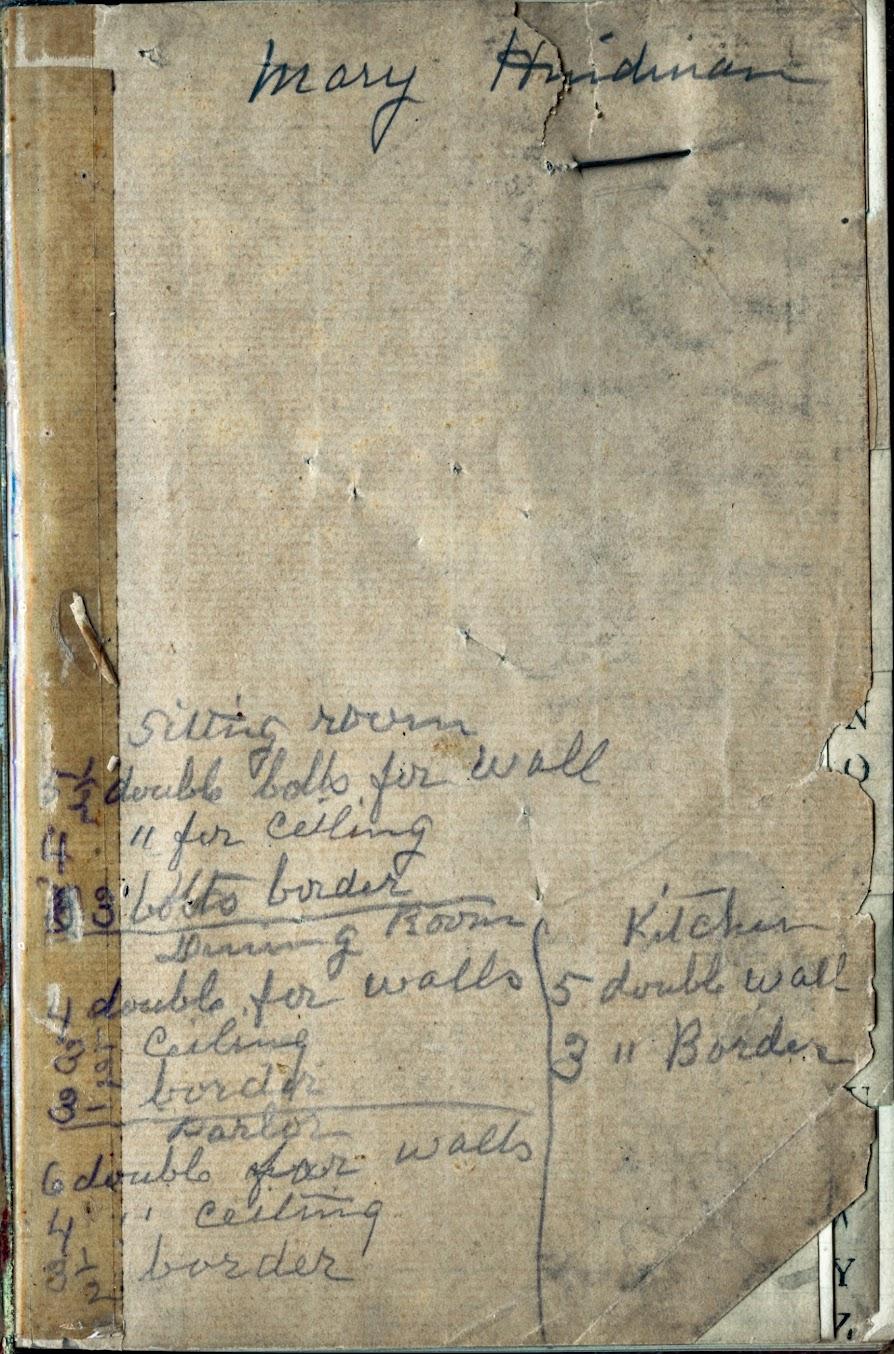page 1R, undated
Mary Hindman
Sitting room
1/2 double bolts for wall
4" for ceiling
? 3' bolts border
-----
Dining Room
4 double for walls
3 1/2 - Ceiling
3 - border
-----
Parlor
6 double for walls
4' " ceiling
3 1/2 border
Kitchen
5 double wall 3" Border
Notes and Illustrations
Here, Mary is (presumably)likely making a list of wallpaper to order for her house. The terms "parlor" and "sitting room" aren'tare generallynot commonly used today. In 1907, the "parlor" would behave been the more formal room, ideally kept clean and orderly at all times, where guests would be entertained. It was the more public-facing room typically used for formal family affairs such as weddings,weddings and funerals. According to the Wikipedia article on Parlors:
In the English-speaking world of the 18th and 19th century,centuries, having a parlourparlor room was evidence of social status. It was proofindicated that one had risen above those who lived in one or two rooms. As the parlourparlor was the room in which the larger world encountered the private sphere of middle class life (the family's face to the world), it was invariably the best room (it was often colloquially called that) in the home. The parlour frequently displayed a family's best furnishings, works of artart, and other status symbols.
On the other hand, the "sitting room" would be the more private, informal room where children could play and the room more akin to what we now call the "family room."
This article from the June 17, 1899 edition of the Daily Republican contrasts the use of parlors and sitting rooms during that period.
The "sitting room" would be the more private informal room where children could play and would be the room more akin to what we now call the "family room"room."
.


